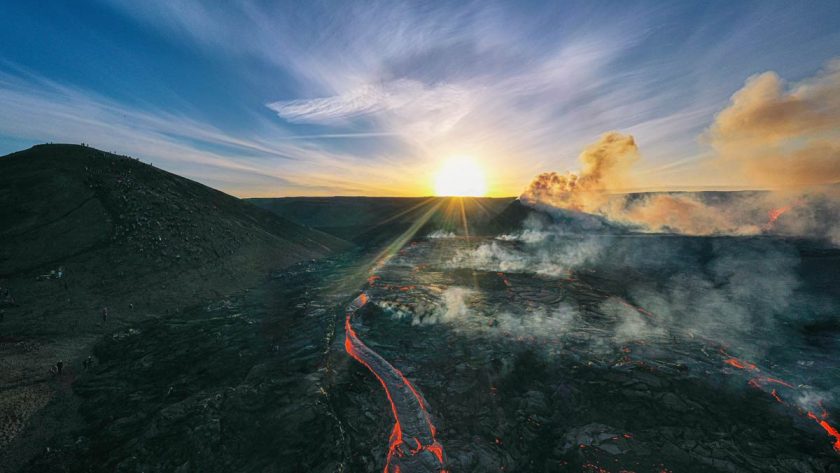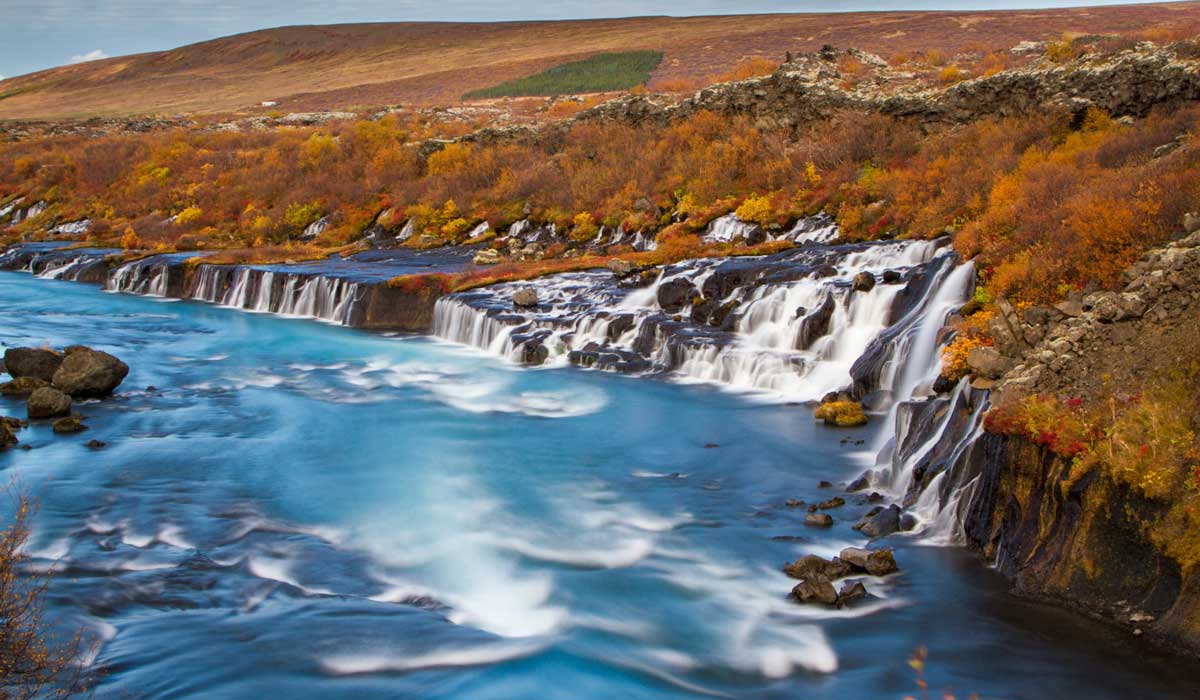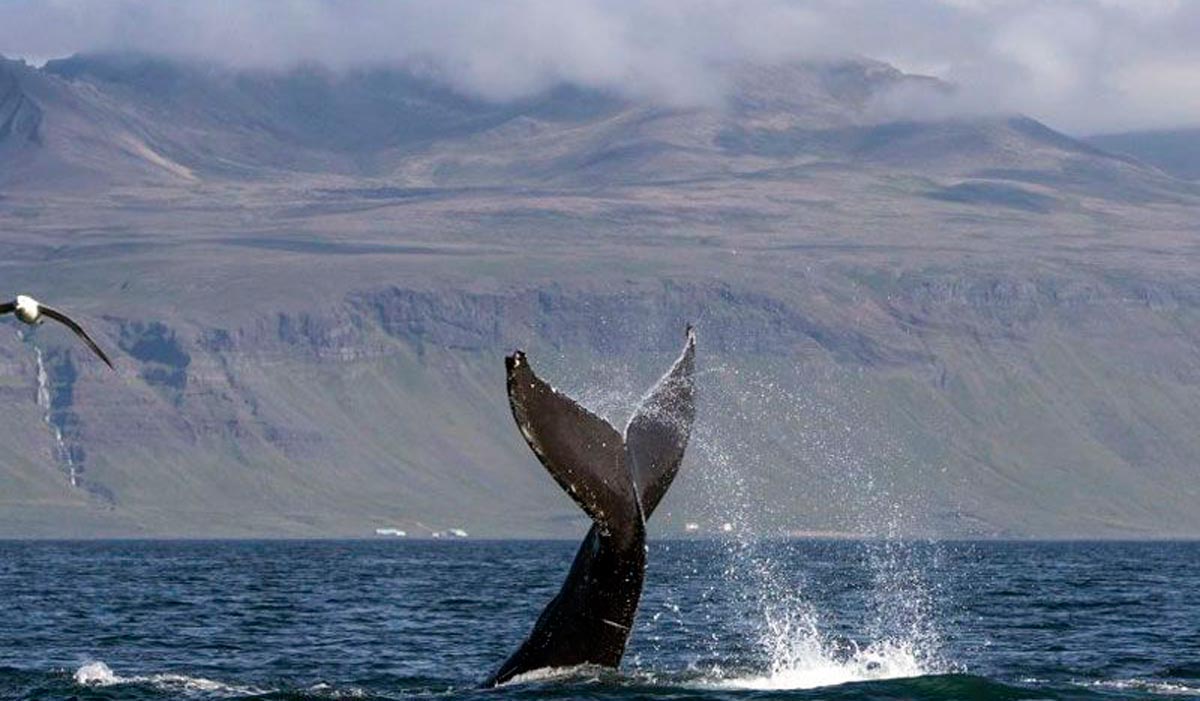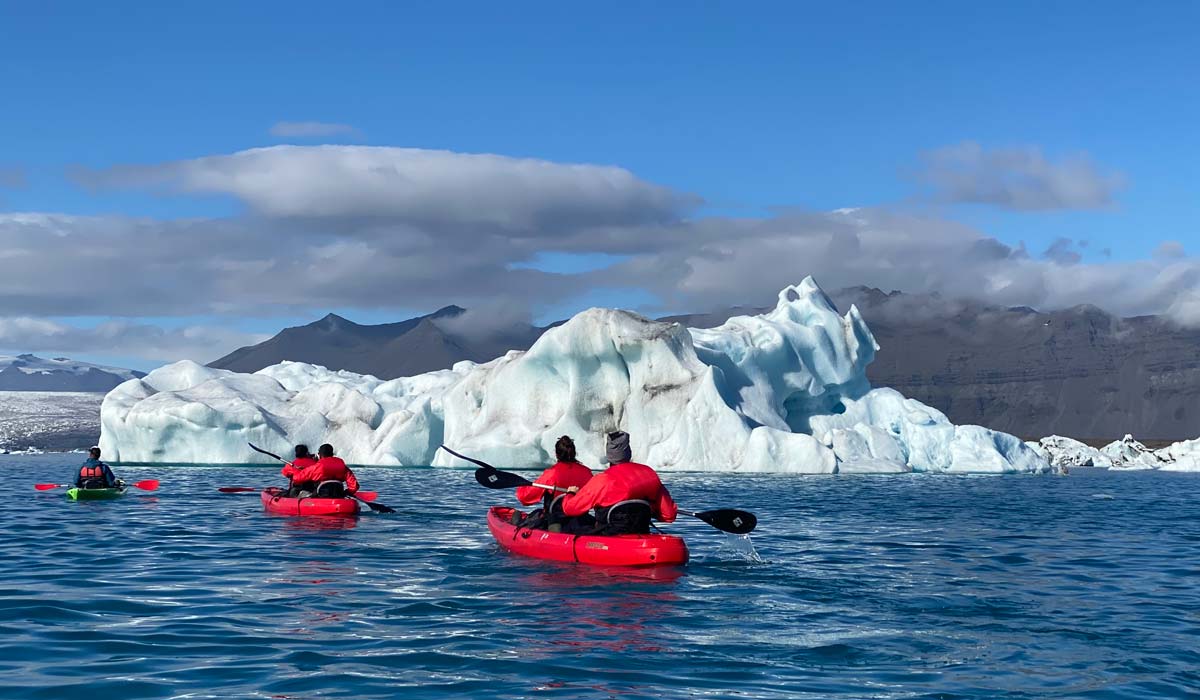This post is also available in:
 Español
Español
Iceland’s volcanoes: the guide not to be missed
If you have ever thought about visiting Iceland, you will know that it is the country of fire and ice. So well known for its dreamlike landscapes full of contrasts. On the one hand, you can enjoy impressive glaciers and on the other hand, the majestic Iceland’s volcanoes.
The volcanoes of Iceland are about 130. Many of them are active and are of unique beauty.
Apart from enjoying the northern lights at the Jökulsárlón Glacier Lagoon or discovering the Blue Ice Cave, the volcanoes of Iceland are a unique landscape where you can do different activities such as trekking or watch a live eruption.
But first, which volcanoes to visit? Here you have the guide and all the information about the volcanoes of Iceland that we recommend the most. 😉
Volcanic eruptions: measures
These volcanoes started to become best known in 2010 with the eruption of Eyjafjallajökull volcano. This volcano caused a furor even though it did not erupt with much intensity.
Currently volcanic eruptions on the island are minimal and there is a safety protocol in place when there is any eruption sign.
Some of the safety measures in case of danger are restriction and vigilance in the seismic zone.
Fagradalsfjall
Iceland’s volcano Fagradalsfjall is one of the most famous and is located in the southwest of the country. Specifically in Geldingadalir about 30km from the capital, Reykjavik .
The last time it erupted on March 19, 2021, it presented no threat and was quite a natural spectacle.
We assure you that those who got to see it live will not forget the experience. The size of the people compared to the lava field is said to be impressive and overwhelming.
Hiking Fagradalsfjall Volcano and being able to see the eruption up close is an unforgettable experience. The tour starts in Reykjavík and reaches the volcanic eruption in Geldingadalir, always following the safety instructions and enjoying the scenery.

Hverfjall/Hverfell
Hverfjall or Hverfell is another volcano in Iceland that has not erupted for about 4,500 years.
Hiking around the volcano area is simple and will not cause you any difficulty. The crater of this volcano is only one kilometer in diameter, going around it will be a piece of cake.

Grímsvötn
Grímsvötn volcano is to the southeast, situated beneath the Vatnajökull glacier. It is known as the deadliest on the island because when it is erupting the ash clouds are the largest and deadliest.
Besides the fire, the craters of this Icelandic volcano are under ice, being practically invisible.
Eyjafjallajökull
.
The eruption of the Eyjafjallajökull volcano in 2010 caused an incomparable disruption to air traffic in Europe. This is how Eyjafjallajökull became known.
As a fun fact, Eyjafjallajökull’s volcanic system is connected to Katla’s volcanic system. This means that if there is an eruption at the former, there will also be an eruption at the latter.
It is said that this volcano is the most famous since it became known in 2010.
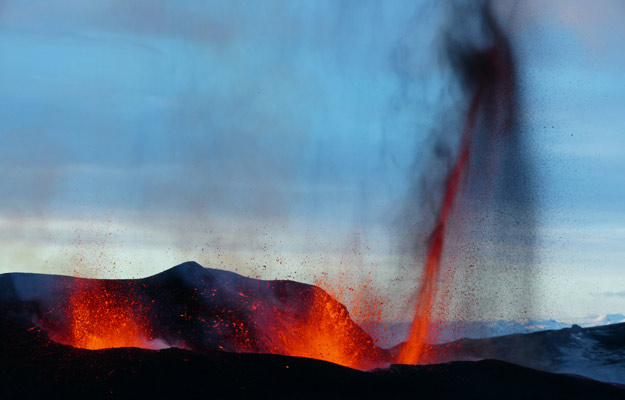
Katla
Katla volcano sits beneath the Mýrdalsjökull glacier in south Iceland. As mentioned above, it is recognized for being connected to the Eyjafjallajökull volcano and for its huge ash clouds.
Katla has been roaring for years and scientists are prepared to monitor its eruption. But it poses little threat to the population, as in the South Coast of Iceland, where it sits, cities and towns are almost nonexistent.

Thrihnukagigur
Thrihnukagigur is one of Iceland’s most inactive volcanoes. It has not erupted for 4,000 years. That is why you can now visit its magma chamber.
This chamber occupies a space of 150,000 cubic meters and must be accessed with a small elevator like those in the mines. Quite an adventure.
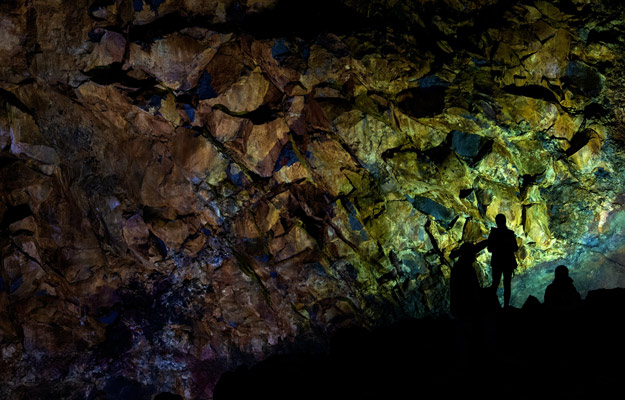
Hekla
Of the Iceland volcanoes , Hekla is one of the most active. In the Middle Ages it was called “the devil’s gateway” because of its great volcanic activity.
Also, it is one of the most unpredictable volcanoes because the recorded intervals between its eruptions are from 9 to 120 years. Let’s see who can understand what’s wrong with this volcano.
Its last eruption was relatively small, in 2000.
Now that you know a little more about the 8 most important volcanoes in Iceland, which one do you find most fascinating?

